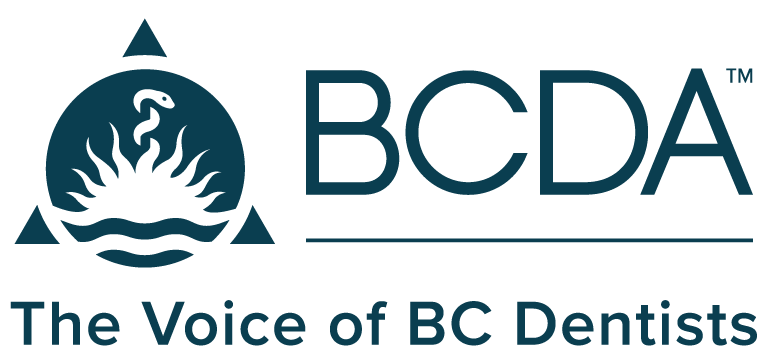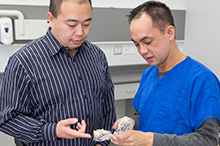At the most basic level a local anesthetic is used to prevent pain. Applied directly to the treatment site, used on its own it will not alter consciousness. Sedation in conjunction with anesthetic medications is used to relieve pain or to relax and calm a patient in preparation for a dental procedure.
What is sedation and general anesthesia?
Various levels of sedation may be used for dental procedures. The level of sedation ranges from mild sedation to general anesthesia (which affects the whole body to varying degrees).
- Minimal sedation: Generally, you feel more relaxed but are able to walk, talk and breathe normally (though this is dose dependent)—you are not asleep.
- Moderate sedation: You can still talk, hear and respond but feel drowsy and sleepy, though you are not asleep. You should be able to breathe on your own and you will still require local anesthetic. Depending on the medications used, you may or may not remember your procedure.
- Deep sedation: You are asleep and can still breathe on your own but can't remember anything about the procedure afterwards. Even with deep sedation, local anesthetic needs to be administered because your pain reflexes, though significantly dulled, are still intact.
- General anesthesia: The deepest level; you are unconscious and cannot feel pain; your reflexes are absent and you need assistance in breathing. You will feel as if you are asleep.
When are sedation and anesthesia used?
While the use of a local anesthetic to prevent pain is sufficient for many dental patients, sedation or general anesthesia may be appropriate to ensure the safe, efficient and competent delivery of dental procedures.
Sedation or general anesthesia is determined on a case-by-case basis and may be recommended for patients that:
- Experience high anxiety due to fear or low tolerance to pain - it can help to prevent or address dental phobias (fear of the dentist);
- Have an allergy to local aesthetic or for whom local anesthetic is not effective in pain control;
- Require complex or invasive dental procedures, or dental procedures that would otherwise require multiple visits if performed without sedation;
- Experience a choking sensation (an exaggerated gag reflex), or have difficulty opening their mouth for a sustained period of time;
- Are unable to remain still during the dental treatment (due to a mental or physical disability);
- Are medically compromised or have special health care requirements.
Any decision regarding sedatives is based on an individual assessment and discussion with your dentist.
What is the most common method of sedation?
The most common form of sedation in dentistry is the use of minimal sedation, such as nitrous oxide (by inhaling through a mask) or taking a sedative, such as Ativan, to relax the patient. Nitrous oxide is provided in conjunction with oxygen. It enables a patient to maintain consciousness in a sedated state. As the level of sedation increases it may be used in conjunction with other medications to temporarily increase its effectiveness, and may cause a little drowsiness.
Can all dentists provide sedation or general anesthesia in their offices?
Dentists are trained in minimal sedation; however, those offering moderate sedation to general anesthesia must have the appropriate qualifications and be registered with the BC College of Oral Health Professionals.
Dentists may work with other health care professionals to provide sedation and anesthesia such as an anesthesiologist, a registered nurse as well as specifically qualified dental team members. The dentist and the facility where the sedation is being administered must meet rigorous requirements in order to be accredited to deliver moderate sedation, deep sedation and general anesthesia.
What level of training is required?
Training determines what level of sedation a dentist or certified specialist can provide. Competency is based on education through the undergraduate dental program, postgraduate training and continuing professional education. Supervised clinical practice experience is also required for advanced levels of sedation.
How do I know if my dentist/dental office can provide sedation?
Speak to your dentist about their qualifications before treatment, as well as the qualifications of their staff and any other health care professionals they work with (i.e. anesthesiologists, registered nurse). Contact the BC College of Oral Health Professionals to confirm the dentist can provide sedation or general anesthesia in their office.
Is sedation and general anesthesia safe?
Dental patients often don’t realize that dental procedures are surgical and as with all surgery, there is some degree of risk. Sedation and general anesthesia are safely and effectively used for thousands of dental procedures each year.
What can patients do?
- Confirm that your dentist is qualified and registered to provide the level of sedation recommended for you and the procedure you’re having.
- Follow any pre- and post-sedation instructions provided by your dentist.
- Provide your dentist with a detailed medical update before your treatment including any changes to your health; or recent health concerns (such as dizziness, difficulty breathing); and a full list of any medications you’re taking.
- If you have any pre-existing medical conditions, your dentist may also consult with your physician in advance of your dental treatment.
- Let your dentist know about any previous experiences with sedation or general anesthesia.
If you have any questions about your dental treatment, or the level of sedation recommended, talk to your dentist before your treatment.
What are the effects of sedation or general anesthesia?
Depending on the level of sedation, it can be completely normal to feel drowsy and have limited recollection of your appointment.
For all types of sedation, mild, moderate, deep sedation or general anesthetic, it is expected that your coordination and reasoning skills may be impacted for up to 24 hours following treatment. Your dental office will request that you have a friend or family member pick you up from the appointment, and that you not drive.
Talk to your dentist before treatment about any expected side-effects for the level of sedation that you will have.
Do I require sedation or general anesthesia for my dental procedure/treatment?
Whether or not sedation is used for your specific procedure, as well as the type of sedation recommended, will depend on a few factors: the nature of your treatment; your level of anxiety; and your overall health and medical history. Discuss the sedation options with your dentist to make an informed decision for your health.
What should I know/ask before agreeing to any level of sedation for my dental procedure/treatment?
- Confirm that your dentist is registered with the BC College of Oral Health Professionals to provide the level of sedation recommended for your dental procedure in their dental office.
- Confirm who will be present for your dental procedure, and their experience and training regarding the level of sedation you will be receiving.
- If you are having moderate or deep sedation or general anesthesia in the dental office, ensure the facility is registered for that level of sedation. Check with the BC College of Oral Health Professionals
- Ask what measures are in place if a medical emergency occurs.
- Confirm any pre- or post- treatment requirements to ensure that you are properly prepared for your treatment, and that you have a safe recovery. Go over any requirements with the dental office staff to ensure you understand the details of the directions. It is important to follow all directions accurately.
- Ask what you can expect to feel during your dental treatment. Will you feel anything like pressure, or numbness? Will you be alert?
- Ask what you can expect after your treatment. Will there be any side effects? Do you require any medication?
- Ask how long the dental procedure will take and what, if any, recovery time there will be.
- You will need a responsible adult to accompany and drive you home.
It is also very important for you to let your dentist know about your overall health.
- Share any health issues or recent concerns with your dentist including any prescriptions you may be taking, changes to your health or any undiagnosed health concerns you may have (i.e. recent dizziness, shortness of breath).
- Inform your dentist of any family history of problems with sedation or general anesthesia.
- Let your dentist know of any changes since your last appointment.
Why is my dentist recommending sedation for my child?
A dentist may recommend sedation for your child's dental treatment due to:
- The age of the child – very young children have difficulty cooperating with treatment.
- Length of procedure – young children may not be able to sit still long enough to safely perform the procedure
- Invasiveness of the treatment required.
- Complexity of the required procedure such as correction of a cleft lip or palate.
Sedating a child for dental treatment allows the child to be treated in a less anxious state. Children usually do not remember the details for the procedures which can help them to come back for further treatments and also to avoid the fear factor that can lead to dental phobias in adults.
What type of sedation is available for children?
Children may receive dental treatment under various levels of sedation up to general anesthesia. Sedation provides a stress-free experience for the child and enables the dental team to deliver care safely and efficiently.
Very young children may require treatment in hospital. Speak to your dentist about your child's needs.
Are there any specific concerns for children?
Dentists are required to meet specific requirements for the safe use of sedation in children including the American Academy of Pediatric Dentistry’s Guidelines for Monitoring and Management of Pediatric Patients During and After Sedation for Diagnostic and Therapeutic Procedures, as well as BC College of Oral Health Professionals BC Minimal and Moderate Sedation services in Dentistry Standards and Guidelines.
- Talk to your dentist about the sedation options available for your child and for the dental treatment recommended.
- Remember to accurately follow any pre- and post-treatment instructions.
- Provide your dentist with a complete medical history of your child including any recent concerns or changes to their health.
- Refer to What should I know/ask before proceeding with a procedure? for a detailed list of questions to ask.







